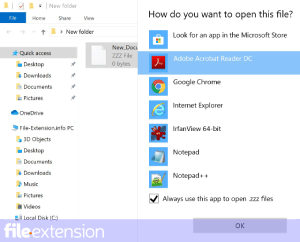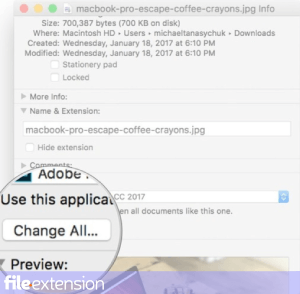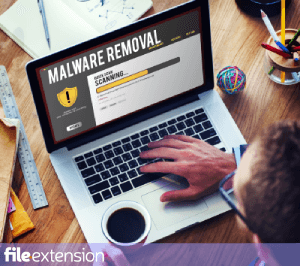
FUL File Extension
Microsoft Backup Format List
-
DeveloperMicrosoft
-
Category
-
Popularity3.5 (4 votes)
What is FUL file?
FUL filename suffix is mostly used for Microsoft Backup Format List files. Microsoft defined the Microsoft Backup Format List format standard. FUL files are supported by software applications available for devices running . FUL file belongs to the Backup Files category just like 243 other filename extensions listed in our database. Users are advised to use MSBackup software for managing FUL files, although 1 other programs can also handle this type of file.
Programs which support FUL file extension
FUL files can be encountered on all system platforms, including mobile, yet there is no guarantee each will properly support such files.
How to open file with FUL extension?
There can be multiple causes why you have problems with opening FUL files on given system. Fortunately, most common problems with FUL files can be solved without in-depth IT knowledge, and most importantly, in a matter of minutes. The list below will guide you through the process of addressing the encountered problem.
Step 1. Get the MSBackup
 The most common reason for such problems is the lack of proper applications that supports FUL files installed on the system. The most obvious solution is to download and install MSBackup or one to the listed programs: Microsoft Windows. The full list of programs grouped by operating systems can be found above. If you want to download MSBackup installer in the most secured manner, we suggest you visit website and download from their official repositories.
The most common reason for such problems is the lack of proper applications that supports FUL files installed on the system. The most obvious solution is to download and install MSBackup or one to the listed programs: Microsoft Windows. The full list of programs grouped by operating systems can be found above. If you want to download MSBackup installer in the most secured manner, we suggest you visit website and download from their official repositories.
Step 2. Update MSBackup to the latest version
 You still cannot access FUL files although MSBackup is installed on your system? Make sure that the software is up to date. It may also happen that software creators by updating their applications add compatibility with other, newer file formats. The reason that MSBackup cannot handle files with FUL may be that the software is outdated. The most recent version of MSBackup is backward compatible and can handle file formats supported by older versions of the software.
You still cannot access FUL files although MSBackup is installed on your system? Make sure that the software is up to date. It may also happen that software creators by updating their applications add compatibility with other, newer file formats. The reason that MSBackup cannot handle files with FUL may be that the software is outdated. The most recent version of MSBackup is backward compatible and can handle file formats supported by older versions of the software.
Step 3. Assign MSBackup to FUL files
After installing MSBackup (the most recent version) make sure that it is set as the default application to open FUL files. The process of associating file formats with default application may differ in details depending on platform, but the basic procedure is very similar.

The procedure to change the default program in Windows
- Right-click the FUL file and choose option
- Click and then select option
- The last step is to select option supply the directory path to the folder where MSBackup is installed. Now all that is left is to confirm your choice by selecting Always use this app to open FUL files and clicking .

The procedure to change the default program in Mac OS
- From the drop-down menu, accessed by clicking the file with FUL extension, select
- Find the option – click the title if its hidden
- Select the appropriate software and save your settings by clicking
- Finally, a This change will be applied to all files with FUL extension message should pop-up. Click button in order to confirm your choice.
Step 4. Verify that the FUL is not faulty
Should the problem still occur after following steps 1-3, check if the FUL file is valid. Being unable to access the file can be related to various issues.

1. The FUL may be infected with malware – make sure to scan it with an antivirus tool.
If the FUL is indeed infected, it is possible that the malware is blocking it from opening. Immediately scan the file using an antivirus tool or scan the whole system to ensure the whole system is safe. FUL file is infected with malware? Follow the steps suggested by your antivirus software.
2. Check whether the file is corrupted or damaged
Did you receive the FUL file in question from a different person? Ask him/her to send it one more time. The file might have been copied erroneously and the data lost integrity, which precludes from accessing the file. If the FUL file has been downloaded from the internet only partially, try to redownload it.
3. Verify whether your account has administrative rights
Some files require elevated access rights to open them. Log out of your current account and log in to an account with sufficient access privileges. Then open the Microsoft Backup Format List file.
4. Make sure that the system has sufficient resources to run MSBackup
The operating systems may note enough free resources to run the application that support FUL files. Close all running programs and try opening the FUL file.
5. Ensure that you have the latest drivers and system updates and patches installed
Up-to-date system and drivers not only makes your computer more secure, but also may solve problems with Microsoft Backup Format List file. It is possible that one of the available system or driver updates may solve the problems with FUL files affecting older versions of given software.
Do you want to help?
If you have additional information about the FUL file, we will be grateful if you share it with our users. To do this, use the form here and send us your information on FUL file.

 Windows
Windows 

